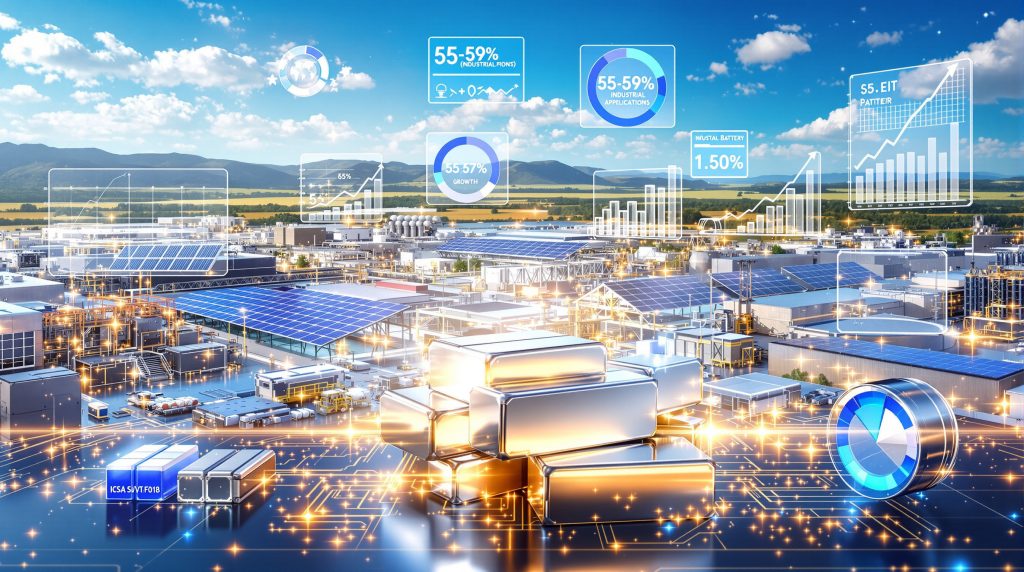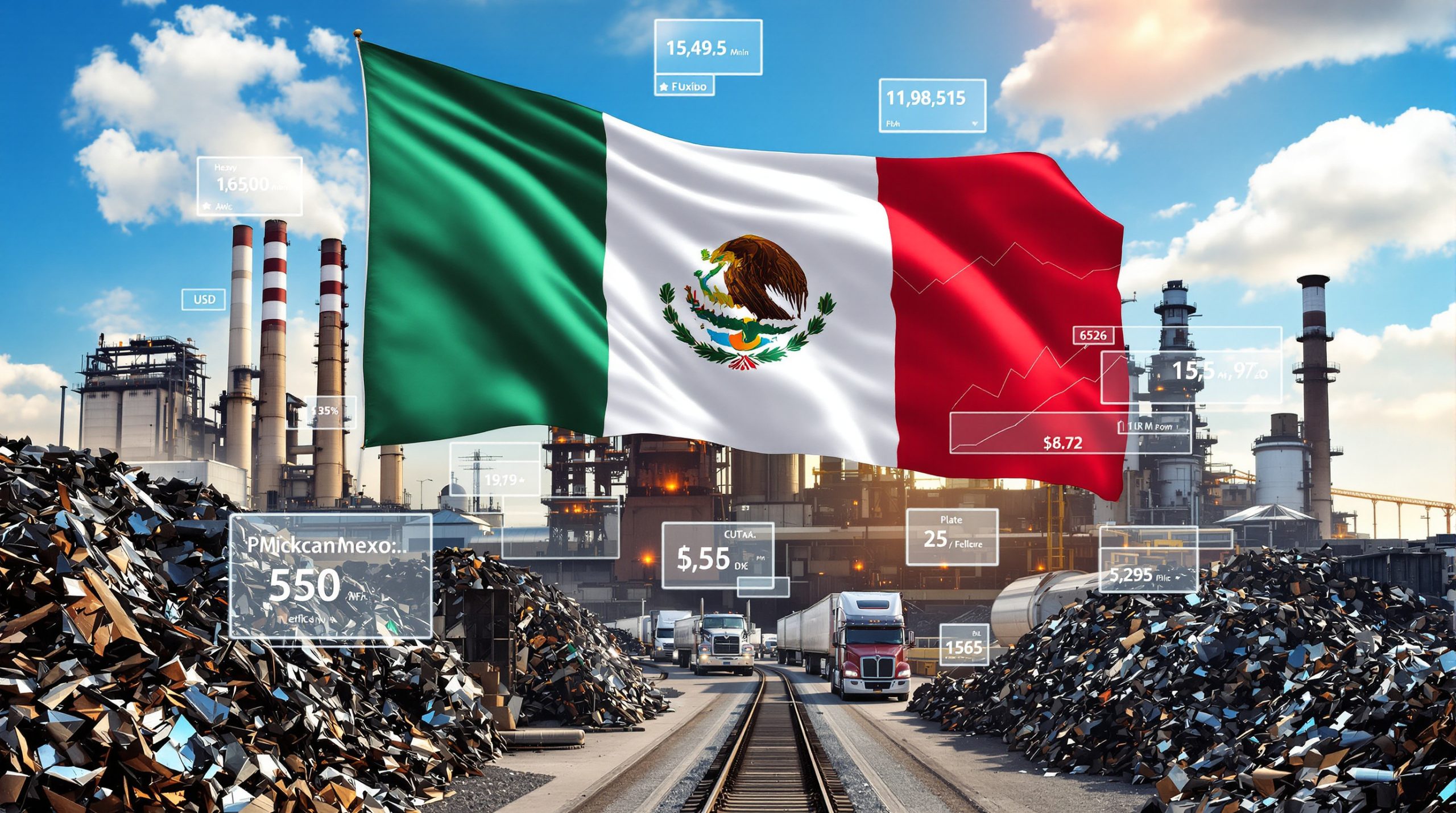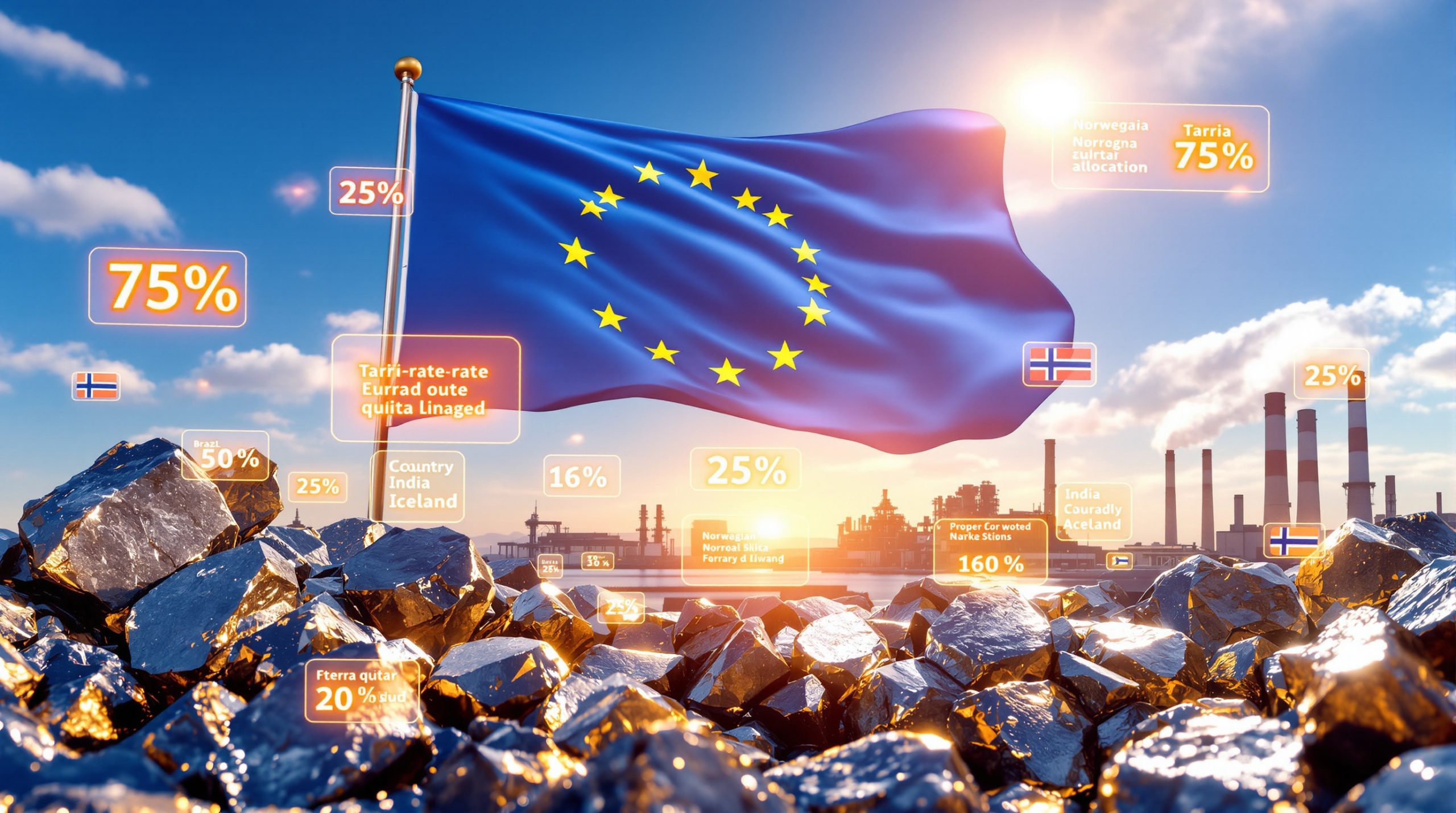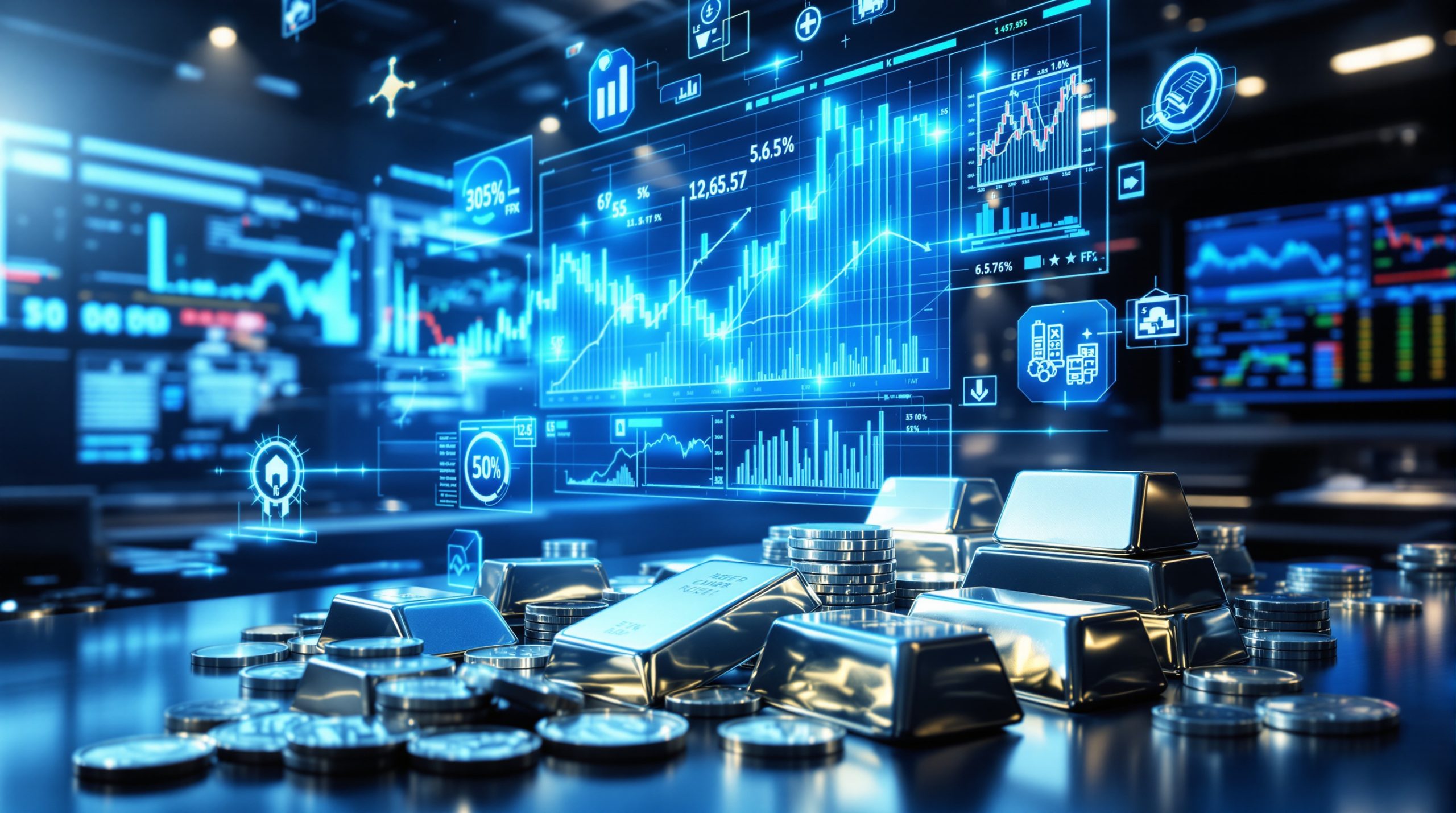The transformation of industrial manufacturing over the past decade represents one of the most significant economic shifts in modern history. Technologies that were once considered futuristic have become essential infrastructure components, requiring specialized materials with unique properties. Among these materials, silver has emerged as a cornerstone of industrial advancement, possessing unmatched characteristics that make it indispensable across multiple sectors. Understanding silver demand and industrial applications requires examining how manufacturing demands are reshaping global commodity markets and creating new investment paradigms.
The Fundamental Properties Driving Industrial Adoption
Silver's position as an industrial commodity stems from its exceptional physical and chemical properties that cannot be replicated by alternative materials. The metal exhibits the highest electrical conductivity of any element, surpassing copper by approximately 15% and gold by 6%. This superior conductivity becomes critical in applications where energy efficiency and signal integrity are paramount.
Beyond electrical properties, silver demonstrates remarkable thermal conductivity, enabling effective heat dissipation in high-performance electronic systems. The metal's antimicrobial characteristics, recognised for centuries, have gained renewed importance in modern healthcare and public infrastructure applications. These properties create what economists term inelastic demand, where price fluctuations have minimal impact on consumption patterns due to the absence of viable substitutes.
The industrial demand landscape reveals striking differences from precious metals markets. While gold primarily functions as a store of value and portfolio hedge, silver operates as a fundamental manufacturing input. Current market data shows that industrial applications now represent 55-59% of total global silver demand, fundamentally altering the metal's price dynamics and supply-demand relationships. Furthermore, ongoing research by the Silver Institute confirms these consumption trends.
Evolution of Industrial Silver Consumption
The transformation of silver demand patterns over the past decade reflects broader technological and economic trends. Traditional applications such as photography and silverware have given way to sophisticated electronics, renewable energy systems, and emerging technologies. This shift represents more than simple substitution; it indicates a fundamental change in how modern economies consume silver.
Industrial consumption has experienced four consecutive years of record growth through 2024, with total industrial demand reaching approximately 680.5 million ounces. This growth trajectory contrasts sharply with declining investment demand and stable jewellery consumption, positioning silver demand and industrial applications as the primary driver of market dynamics.
The electronics sector alone now consumes over 445 million ounces annually, representing nearly one-third of total silver demand. This consumption level reflects the proliferation of connected devices, infrastructure digitalisation, and the increasing silver content per unit as devices become more sophisticated.
Geographic Demand Distribution
| Region | Annual Consumption | Primary Applications | Growth Rate |
|---|---|---|---|
| China | 280 million oz | Electronics, Solar panels | 18% annually |
| India | 85 million oz | Electronics, Infrastructure | 22% annually |
| Europe | 110 million oz | Automotive, Renewables | 12% annually |
| North America | 95 million oz | Data centres, Defence | 8% annually |
Sector-Specific Demand Analysis
Electronics Manufacturing: The Dominant Consumer
The electronics sector's consumption patterns reveal the depth of modern silver dependence. Printed circuit boards require silver for critical pathway connections, with typical smartphones containing 0.13 grams of silver and high-end laptops utilising up to 0.75 grams. The Internet of Things expansion has multiplied these requirements exponentially.
Critical applications include:
- Membrane switches and electrical contacts in industrial equipment
- Conductive adhesives for flexible electronics
- Electromagnetic interference shielding in 5G infrastructure
- High-frequency components for telecommunications equipment
The sector experiences 20% year-over-year growth, driven by device miniaturisation requiring higher silver content per unit, 5G infrastructure deployment, and increasing electronic content in automotive applications. Consequently, the mining industry evolution must adapt to meet these unprecedented demands.
Photovoltaic Systems: The Renewable Energy Catalyst
Solar panel manufacturing represents the fastest-growing industrial application, with silver paste creating conductive pathways essential for photovoltaic cell efficiency. Each residential solar panel contains approximately 20 grams of silver, while commercial installations require significantly higher quantities.
Solar sector silver demand has increased 140% since 2016, making it the single largest driver of industrial growth. The sector's expansion correlates directly with government renewable energy mandates and declining solar installation costs. Current projections suggest this segment will require 150 million ounces annually by 2030.
Automotive Electrification Revolution
The transportation sector's silver consumption reflects the broader electrification trend. Electric vehicles require 25-50 grams of silver per unit, compared to 15-20 grams in traditional internal combustion vehicles. This increase stems from:
- Battery management systems requiring precise electrical control
- Charging infrastructure components
- Advanced driver assistance systems (ADAS)
- Power inverters and motor controllers
Global electric vehicle production targets suggest automotive silver demand will reach 55 million ounces annually by 2030, representing a 180% increase from current levels. However, this growth must be managed alongside proper waste management strategies to ensure sustainable operations.
Chemical Catalysts: Industrial Foundation
Chemical manufacturing utilises silver catalysts in essential industrial processes, particularly ethylene oxide production for plastics manufacturing and formaldehyde synthesis for adhesives. These applications provide steady baseline demand linked to global manufacturing output.
The chemical sector consumes approximately 60 million ounces annually, with demand patterns closely correlated to global GDP growth and industrial production cycles.
Emerging Applications Reshaping Demand
Artificial Intelligence Infrastructure
The artificial intelligence revolution creates new silver demand vectors through data centre expansion and specialised computing infrastructure. AI applications require:
- High-performance computing systems with advanced thermal management
- Quantum computing components utilising silver's unique electrical properties
- Ultra-low latency network infrastructure for high-frequency applications
- Specialised cooling systems for processor-intensive operations
Current AI infrastructure development suggests potential silver demand of 25-40 million ounces annually within the next five years.
Medical Technology Advancement
Healthcare applications leverage silver's antimicrobial properties in sophisticated ways:
- Water treatment systems in hospitals and healthcare facilities
- Antimicrobial surface coatings for medical equipment
- Advanced diagnostic imaging equipment
- Pharmaceutical manufacturing catalysts
The global focus on healthcare infrastructure following recent pandemic experiences has accelerated adoption across these applications.
Nuclear Energy Renaissance
Nuclear power generation requires silver for critical control systems and electrical components. Control rod mechanisms contain significant silver quantities, and electrical systems throughout nuclear facilities depend on silver's reliability in high-radiation environments.
Recent announcements include a billion-dollar contract between Westinghouse and the U.S. Department of Defense for nuclear reactor development, with 30 nuclear plants planned for construction. Each nuclear facility requires approximately 2-3 million ounces of silver over its operational lifetime.
Supply-Demand Imbalance Analysis
The Structural Deficit Reality
Global silver markets face a fundamental imbalance between production and consumption. Annual mine production reaches approximately 850 million ounces, while total consumption exceeds 1.2 billion ounces. This 370 million ounce annual deficit has persisted for five consecutive years, creating a cumulative shortage approaching 1 billion ounces.
The persistent silver supply deficits reflect the growing gap between industrial requirements and available supply. Deficit funding sources include:
- Investment inventory liquidation
- Government strategic reserve releases
- Industrial recycling (limited by low recovery rates)
- Scrap metal processing
These sources face natural limitations, with investment inventories declining and recycling rates remaining below 15% due to the small quantities used in individual applications.
Warehouse Inventory Dynamics
Shanghai warehouses, historically significant silver storage facilities, have declined to 2015 levels according to recent market data. This inventory reduction occurs while industrial demand continues accelerating, indicating that available stockpiles are being consumed rather than accumulated.
London markets have experienced delivery issues, prompting metal transfers between major trading centres and highlighting the physical constraints facing silver markets. For instance, detailed analysis from industrial silver demand reports supports these inventory trends.
Price Sensitivity Characteristics
Industrial silver demand and industrial applications exhibit low price elasticity due to several factors:
- Critical performance requirements preventing material substitution
- Small material cost relative to end-product value
- Long-term supply contracts providing price stability
- Technical specifications requiring silver's unique properties
Even at current price levels exceeding $30 per ounce, industrial users continue consumption patterns with minimal adjustment, demonstrating the essential nature of silver in modern manufacturing.
Investment and Strategic Implications
Critical Material Designation Impact
The U.S. government's classification of silver as a critical mineral has fundamentally altered strategic thinking around silver supply chains. The recent critical minerals order recognises silver's importance to national security and economic infrastructure, potentially leading to:
- Strategic stockpiling programmes
- Supply chain diversification initiatives
- Domestic production incentives
- Enhanced monitoring of international trade flows
Supply Chain Vulnerability Assessment
Silver supply chains face multiple risk factors that concern industrial users and investors:
Geographic concentration: Primary production concentrated in Mexico, Peru, and China
Refining capacity: Limited number of facilities capable of producing high-purity industrial silver
Transportation logistics: Silver's density creates shipping challenges and costs
Geopolitical risks: Trade tensions affecting cross-border metal flows
These vulnerabilities encourage industrial users to develop long-term supply agreements and consider strategic inventory building during favourable pricing periods.
Future Demand Projections
Market analysts project multiple demand scenarios based on technological adoption rates and economic growth patterns:
Conservative scenario: 5-7% annual industrial demand growth driven by existing applications and steady economic expansion.
Accelerated scenario: 10-15% growth if renewable energy deployment and AI infrastructure development exceed current projections.
Breakthrough scenario: 20%+ growth with widespread adoption of quantum computing, fusion energy, or other silver-intensive technologies.
Production Response Challenges
Unlike other commodities, silver production cannot respond quickly to price signals due to several constraints:
- Capital intensity: Mine development requires substantial upfront investment
- Time requirements: New projects need 3-10 years from discovery to production
- Permitting complexity: Environmental and regulatory approvals create additional delays
- Infrastructure needs: Remote locations require extensive support infrastructure
Primary silver mines are relatively rare, with most production coming as a byproduct of copper, lead, and zinc mining. This structure means silver supply responds more to base metal demand than silver prices.
Market Dynamics and Physical Demand
Physical versus Paper Markets
Recent market developments highlight the distinction between physical silver demand and financial market trading. The current price rally differs fundamentally from previous cycles, being driven by physical consumption rather than speculative trading.
Historical comparison shows that the 2009-2011 rally was primarily driven by short covering and speculative activity, leading to rapid price increases followed by sharp corrections. The current market environment reflects sustained industrial consumption creating genuine supply tightness.
International Trade Patterns
Recent trade data reveals significant silver flows to emerging markets, with 75 million ounces reportedly shipped to India over recent months. This represents nearly 9% of annual global production, indicating strong physical demand in developing economies.
Key trade flows include:
- Refined silver exports from Mexico and Peru to manufacturing centres
- Processed products moving from China to global markets
- Strategic metal movements between major financial centres
- Increased South-to-North trade flows as emerging markets consume more silver
Recycling Limitations and Waste Streams
Silver recycling faces unique challenges that distinguish it from other precious metals. Unlike gold, which maintains high recovery rates due to jewellery and coin recycling, industrial silver often ends up in waste streams with minimal recovery potential.
Recovery challenges include:
- Small quantities dispersed across numerous products
- Complex separation processes from electronic waste
- Economic viability of recovery operations
- Consumer behaviour patterns (devices discarded rather than recycled)
Current recycling rates remain below 20% of industrial consumption, meaning most silver used in manufacturing is effectively removed from the supply chain permanently.
Strategic Positioning for Market Evolution
For Industrial Consumers
Companies dependent on silver inputs should develop comprehensive supply chain strategies addressing long-term availability and price volatility:
Supply security measures:
- Establish multi-year supply contracts with producers
- Develop relationships with multiple suppliers across different geographic regions
- Invest in internal recycling capabilities where technically feasible
- Consider strategic inventory building during favourable market conditions
Risk management approaches:
- Implement hedging strategies for price volatility
- Explore alternative materials research and development
- Assess supply chain redundancy and backup options
- Monitor geopolitical developments affecting trade flows
For Mining Companies and Producers
Silver producers face unique opportunities and challenges in the evolving market environment. Furthermore, conducting thorough silver market squeeze analysis helps inform strategic decisions.
Operational priorities:
- Expand production capacity to meet growing industrial demand
- Develop processing capabilities for high-purity industrial applications
- Strengthen relationships with key industrial consumers
- Consider vertical integration opportunities in high-growth sectors
Strategic considerations:
- Balance production between industrial and investment markets
- Assess acquisition opportunities in development-stage projects
- Invest in sustainable mining practices meeting ESG requirements
- Develop expertise in emerging application markets
For Investors and Portfolio Managers
Investment strategies must account for silver's evolving role as an industrial commodity rather than solely a precious metal:
Monitoring metrics:
- Solar panel installation rates and efficiency improvements
- Electric vehicle production and adoption curves
- Data centre construction and AI infrastructure investment
- Government policy changes affecting renewable energy and strategic materials
Portfolio considerations:
- Distinguish between silver as industrial commodity versus monetary asset
- Evaluate exposure through mining companies versus physical holdings
- Consider correlation changes with industrial versus precious metal markets
- Assess supply chain and geopolitical risk factors
Long-Term Market Transformation
The evidence suggests silver markets are undergoing a fundamental transformation from precious metal to industrial commodity. This shift creates new dynamics that traditional precious metals analysis may not fully capture.
Key transformation indicators:
- Industrial demand now exceeds investment demand consistently
- Price movements increasingly correlate with industrial rather than monetary factors
- Supply-demand imbalances reflect physical consumption rather than speculative activity
- Government strategic material designations recognise industrial importance
The current structural deficit, combined with accelerating industrial demand and production constraints, suggests sustained upward pressure on silver prices regardless of monetary policy or investment sentiment cycles.
Understanding these industrial demand patterns provides essential context for stakeholders across the silver ecosystem. As global electrification and digitalisation continue accelerating, silver's role as an enabling material becomes increasingly critical to economic infrastructure and technological advancement.
The transition from precious metal to industrial commodity represents more than a market shift; it reflects the fundamental materials requirements of modern technological civilisation. Those who recognise and adapt to this transformation will be best positioned to navigate the evolving silver market landscape.
Ready to Capitalise on Silver's Industrial Transformation?
Discovery Alert's proprietary Discovery IQ model delivers real-time alerts on significant ASX mineral discoveries, instantly empowering subscribers to identify actionable opportunities ahead of the broader market. Understand why major mineral discoveries can lead to significant market returns by exploring Discovery Alert's discoveries page, showcasing historic examples of exceptional outcomes, and begin your 30-day free trial today to position yourself ahead of the market.




